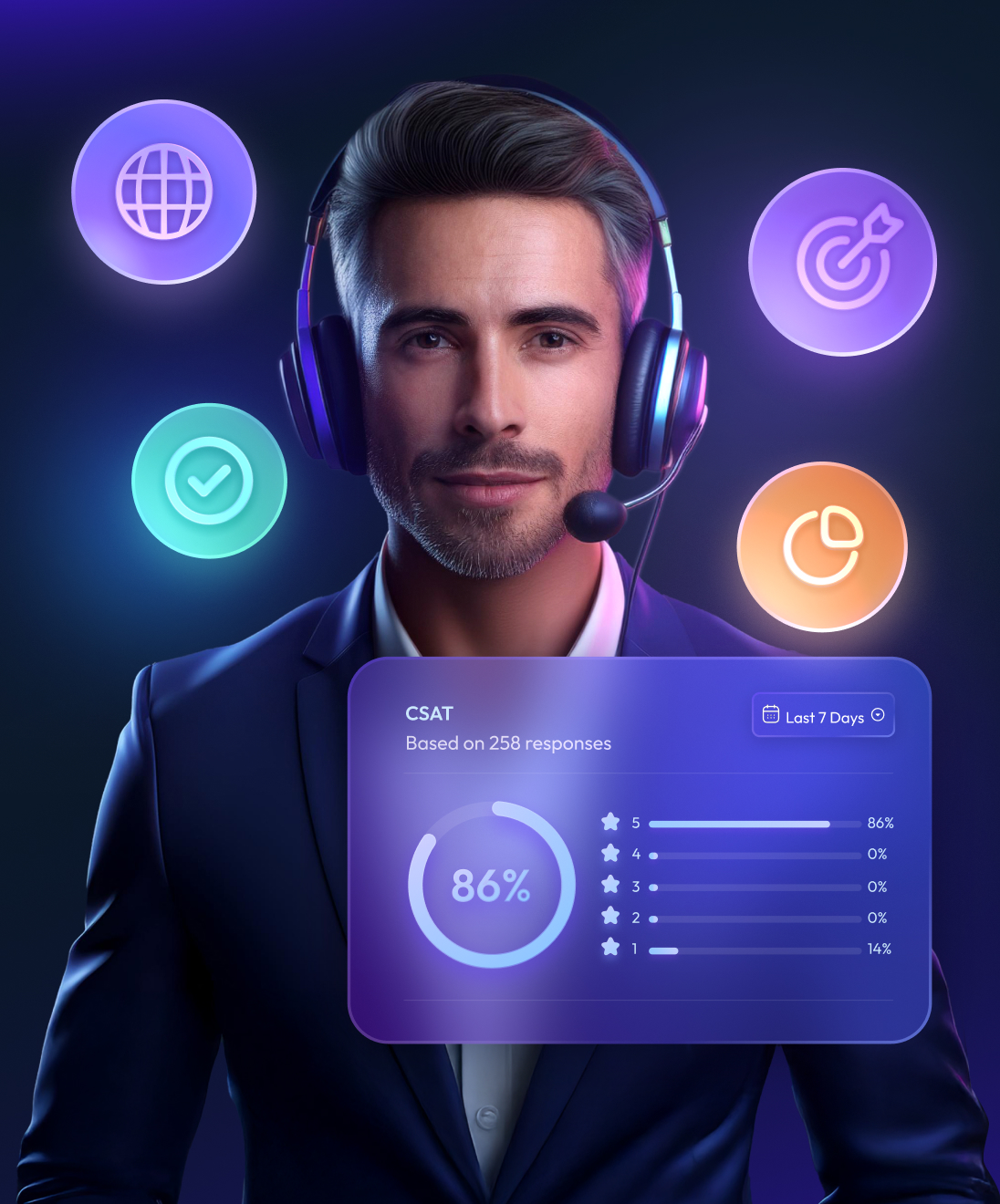Empowering Support Teams with Gen AI Solutions!
With generative AI-powered agent empowering features assist your agents in handling conversations smartly and translating them into metrics that can improve their productivity.








Verloop.io’s exclusive agent dashboards, lets them measure the customer satisfaction score (CSAT), track the status of their conversations and even measure their overall KPIs at a glance without overpopulating data that’s unnecessary to them.

Canned responses are pre-saved messages that your agents can choose from a list of responses by typing in the keywords off the top of their mind. Needless to say, responding in a jiffy means improvement in response rates.

Allow your agents to pull information from your other applications such as CRM, Google maps etc without having to switch tabs. There’s no reason you can’t improve your response rates and resolution times with Verloop.io.

Verloop.io loves solving for nuanced pain points. With Nudge, agents can send reminder/ follow up messages automatically after a specific period of time so that no conversation is left incomplete.

Arm your agents with every bit of context they need while they handle a conversation. Get a complete summary of conversations without any effort. Pass on to the next agent who might handle the same conversation in the future. No, your customers can’t see them.

Enhance response rates and reduce workload with AI Rephrase, AI Expand, AI Tone Adjustment, and Tone Detection. Use AnswerFlow for response suggestions based on document cognition.
Do More with Verloop.io
Out-of-the-box Integrations
Connect with any app instantly. Want to access your ticketing system quickly while talking to your customers? Or perhaps payments or marketing app? We’ve got you covered.
Omnichannel Presence
Be available for your customers 24*7, be available everywhere. From Facebook to Whatsapp, Website to In-app, extend your customer support exactly where your customers are.
Measure and Reflect
Compare, and Analyse the performance of your bot with that of your agents with the most insightful chat statistics. You can also retrieve chats using webhook URLs to get customised ad-hoc reports.
Driving Support Efficiency for 500+ Brands Globally
Frequently asked questions
Agent Assist is an AI-powered tool that provides real-time suggestions, summaries, and knowledge prompts to human agents during live chat or voice interactions—so they can resolve queries faster and more accurately.
By surfacing contextual answers, suggested replies, and product documentation as the conversation unfolds, agents don’t have to search manually, ensuring consistent tone, up-to-date information, and faster resolutions.
Yes. Verloop.io’s Agent Assist works across both channels, offering dynamic recommendations during live calls and chats. It also summarises previous conversations, reducing repetition for the customer and the agent.
Absolutely. You can plug in your existing help docs, FAQs, and CRM to train the AI, so it draws from your own domain-specific content to support agents with the most relevant answers.
Yes. Verloop.io’s Agent Assist supports multi-language understanding and response generation, so your agents can get help with global queries in the customer's preferred language.
Agent Assist is built with data privacy, access control, and audit logs in place—ensuring that any data shown to agents is compliant with enterprise-grade governance, including Verloop.io’s ISO/IEC 42001 certification.









ChatBanking is a step in the direction of ADIB's overall vision of ensuring customers can bank anywhere, anytime, in the language of their choice without any hassles.
Siraj Patel CTO, ADIB